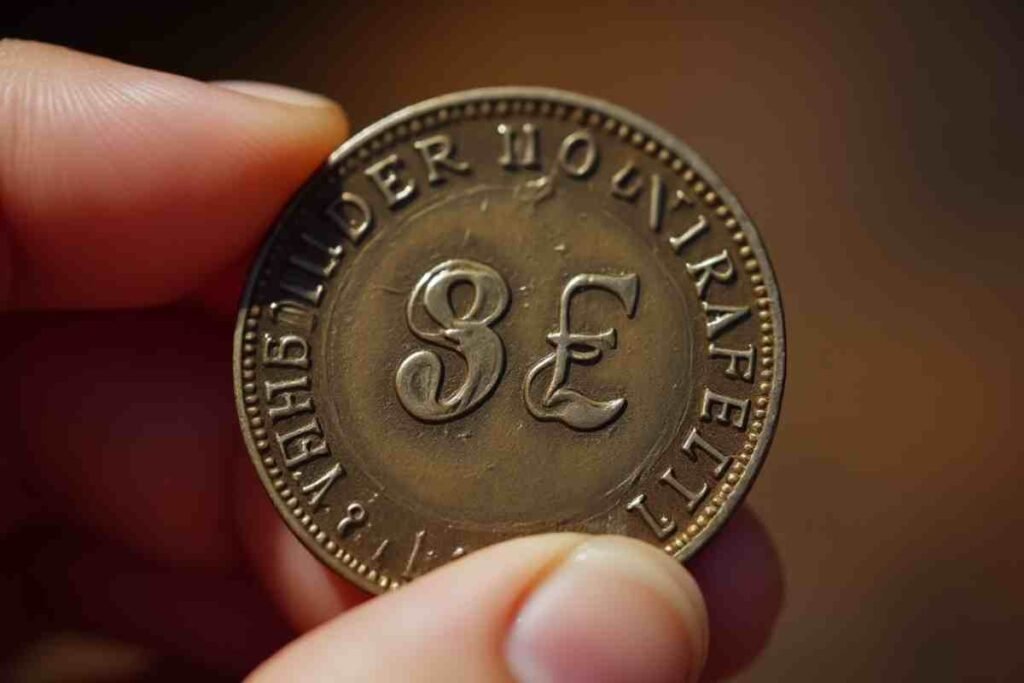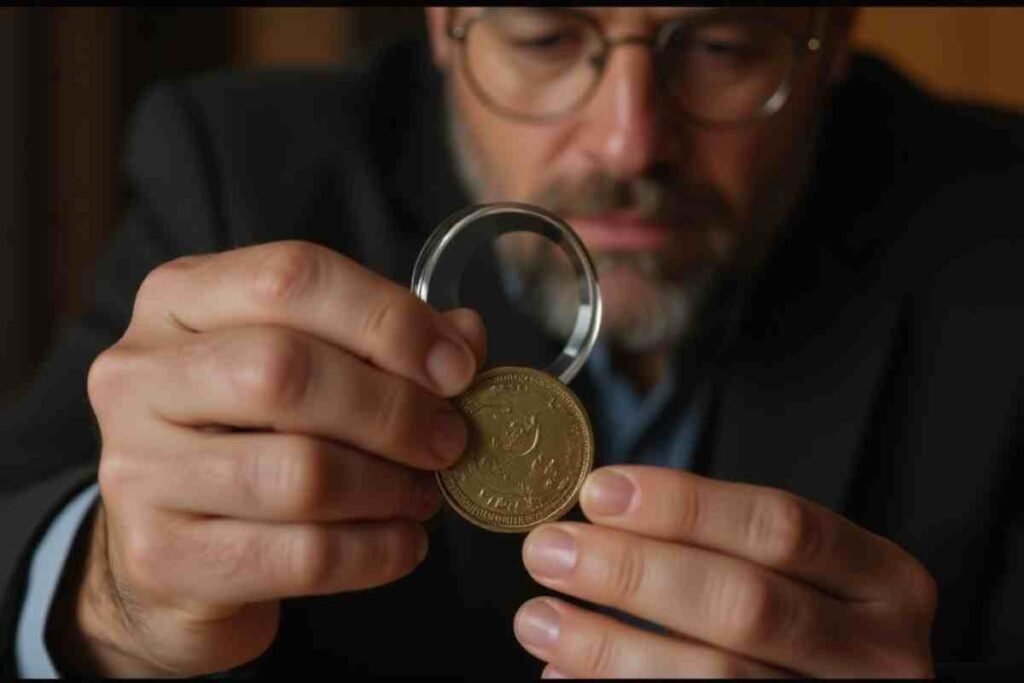The Old Coin Price Guide is your essential resource for understanding how to accurately determine the value of vintage currency.
It covers important factors like rarity, condition, historical significance and market demand that influence old coin prices.
Explore our comprehensive article to learn how to identify, evaluate, and unlock the true worth of your old coins with confidence!
Understanding Old Coin Prices

old coin price isn’t arbitrary it’s a blend of several nuanced factors that make a piece of vintage currency valuable.
To the untrained eye an old coin might appear like just another outdated metal disc but to collectors and numismatists, it can be a historical artifact holding immense worth.Understanding the elements that influence pricing is essential to unlocking its true market value.
What Determines an Old Coin’s Price?
The old coin price of an old coin price depends on several key factors. First, rarity plays a major role coins that were minted in limited numbers or have few surviving examples are generally more valuable.
Second, the coin’s condition or grade affects its worth well preserved coins fetch higher prices. Third, historical significance adds value especially if the coin is linked to important events or famous figures.
Fourth, the metal content such as gold or silver sets a baseline value. Lastly market demand influences prices as collector interest can cause fluctuations. Together these factors determine how much an old coin is worth.
Rarity and Mintage Numbers
Rarity is perhaps the most influential determinant of a coin’s value. A coin that was minted in a small quantity or one that survives in only a few known examples today automatically becomes more desirable.
For instance many war time coins had their metal repurposed which resulted in significantly fewer surviving pieces. This unintentional rarity created by historical circumstances, increases a coin’s value dramatically over time.
Condition and Grading Systems
The condition or grade of the old coin price also plays a crucial role. A old coin price in mint or near-mint condition can fetch prices exponentially higher than the same coin in a poor state.
Grading systems like the Sheldon scale, which ranges from Poor 1 to Mint State 70 help standardize how collectors assess and compare the quality of coins. Even subtle differences like surface luster or the presence of microscopic scratches can significantly affect pricing.
Historical Significance
Historical significance is another major pricing driver. Coins minted during pivotal events such as wartime, independence, royal successions or political revolutions often command premium prices.
A old coin price associated with a famous figure, like a Roman Emperor or a U.S. President, adds further appeal due to its connection with widely known history.
Metal Content
Metal content adds a layer of intrinsic value. Coins made from gold, silver or platinum always carry a base market value depending on the current price of those metals.
However, even base metal coins can be valuable if they meet other criteria like rarity, condition or historical importance.
Market Demand
Finally, market demand cannot be ignored. If a coin design gains popularity due to media attention a resurgence in collecting or the rise of themed numismatics such as wildlife or Olympic collections its price can surge. Demand fluctuates but strong collector interest can push even common coins into premium value brackets.
How to Determine Your Old Coin’s Price?
Evaluating your coin’s worth requires a systematic approach especially if you’re new to coin collecting. Following these steps will provide a comprehensive assessment and ensure you get the most accurate valuation.
Identify Your Coin
The first step in evaluating a coin’s worth is identifying its key attributes. Begin by closely examining its obverse and reverse sides.
You’ll want to note the country of origin, denomination, year of minting and if applicable the mint mark. These identifiers are crucial for determining a coin’s background. For example, two coins from the same year might differ significantly in value if they were minted at different facilities.
Resources such as the NGC Coin Explorer or Krause’s Standard Catalog of World Coins can assist in accurate identification especially when dealing with foreign currency or obscure types.
Assess the Coin’s Condition
Once you’ve identified the old coin price the next step is assessing its condition. Visual inspection can give you an idea but for serious evaluation, consider using magnifying tools to examine finer details like rim dents, strike clarity and wear on high points.
Surface luster, toning and scratches all play roles in determining condition. While amateur grading is a good start for coins you suspect are highly valuable sending them to professional services like PCGS Professional Coin Grading Service or NGC Numismatic Guaranty Corporation is highly advisable.
They provide a sealed certificate of authenticity and an unbiased grade which significantly affects the coin’s marketability.
Research Market Prices
After grading, researching the current market is essential. Look for recent sales of similar coins in both private and public auctions.
Auction houses like Heritage Auctions and Bonhams often list detailed sales data, while online marketplaces such as eBay provide real time insights into what collectors are currently paying.
Be cautious, though asking prices can vary widely from actual sold prices. Always focus on completed listings or historical sale data rather than hopeful asking prices which can be inflated.
Consult Price Guides
old coin price guides are invaluable for getting ballpark figures and understanding market trends. Publications like the Red Book for U.S. coins or Spink’s Coin Catalogue for British coins are updated annually and include estimated retail prices based on coin type and condition.
These guides often categorize coins by mint, year, and grade, making them particularly helpful for comparison. Digital tools like PCGS Price Guide or Coinflation also update regularly to reflect current market conditions and precious metal prices.
Seek Expert Appraisal
If your research indicates that the coin may hold substantial value consult an expert for a formal appraisal. This can be done via professional numismatists, coin shops or at coin shows where multiple appraisers are available.
Many numismatic associations, like the American Numismatic Association ANA or the British Numismatic Society provide directories of certified professionals who can offer accurate evaluations and even facilitate selling or auctioning if desired.
Notable Examples of Valuable Old Coins
Learning from famous coins that have fetched high prices at auction can help illustrate how the aforementioned factors come into play.
The 1933 U.S. Double Eagle
One of the most famous examples is the 1933 U.S. Double Eagle which was never officially circulated due to a government recall.
Only a few examples survived and in 2021 one sold for a staggering $18.9 million, making it the most valuable coin ever sold at auction.
The 2001 D Lincoln Cent Error
The 2001 D Lincoln cent featuring a dramatic minting error is another example. Due to its one of a kind flaw it captured the attention of collectors worldwide and sold for over $100,000.
The lesson here is that minting errors, while seemingly accidental can become high-value features if they are rare and well documented.
The 1947 Indian Rupee Featuring King George VI
old coin price with historical and regional appeal also command attention. A 1947 Indian Rupee featuring King George VI can fetch over $1,000, depending on its mint origin and condition.
Ancient Gold Stater from Alexander the Great’s Era
Similarly, a gold stater from the reign of Alexander the Great a coin that’s over 2,000 years old can reach values upwards of $20,000 due to its age historical gravity and gold content.
Tips for Collectors
old coin price collecting is both a rewarding hobby and a potential investment strategy but it requires knowledge, patience and caution.
Stay Informed and Educated
Staying informed is critical subscribe to numismatic magazines, participate in forums like CoinTalk or Reddit’s r/coins, and attend coin shows to network with experienced collectors and dealers.
Proper Storage and Preservation
Proper storage is often overlooked, yet it’s vital. Coins should be kept in a dry, climate controlled environment. Use acid free holders, coin flips or albums designed specifically for numismatic protection. PVC based plastics should be avoided as they can degrade over time and damage coins.
Beware of Counterfeits

Counterfeiting is a persistent issue in the world of valuable coins. Some fakes are so convincing that only professionals can detect them.
It’s always best to buy from trusted dealers or have a coin authenticated before purchasing or selling especially if it’s priced significantly above average.
Maintain Documentation
Maintaining documentation also adds credibility. Keep receipts, grading certificates, provenance details and any previous appraisal records. When it’s time to sell these records can boost buyer confidence and potentially increase the final sale price.
Conclusion
Understanding old coin price involves more than just metal value it’s about rarity, condition, historical significance and market trends.
By learning how to properly identify and evaluate your coins, you can confidently unlock their true worth. Whether for collecting or investing, staying informed and cautious will help you make the most of your vintage currency. Happy collecting!
For a deeper understanding of how old coin values are determined and explored, check out our detailed guide on unlocking vintage currency prices.
FAQs
What factors determine the value of an old coin?
The value depends on rarity, condition, historical significance, metal content, and current market demand. Each factor influences how much collectors are willing to pay.
How does coin rarity affect its price?
Rarity increases value because coins minted in limited numbers or with few surviving examples are more sought after by collectors.
Why is the condition or grade of a coin important?
old coin price in better condition, especially those graded near mint state, command higher prices as they are more visually appealing and preserved.
Can historical events increase a coin’s value?
Yes, old coin price linked to important historical events or famous figures often have premium value due to their cultural and historical appeal.
Does the metal content of a coin influence its price?
Yes, old coin price made from precious metals like gold or silver have a base value tied to metal prices, adding intrinsic worth beyond collector interest.
How can I identify my old coin accurately?
Check details like country, denomination, year, and mint marks. Use resources like coin catalogs or online tools to confirm its identity.
What’s the best way to assess my coin’s condition?
Use magnification to inspect for wear, scratches, and luster. For valuable coins, professional grading services offer precise and trusted evaluations.
Where can I find reliable price information for old coins?
Auction results, online marketplaces, and published old coin price guides such as the Red Book or PCGS Price Guide provide current market data.
How can I avoid counterfeit coins when buying or selling?
Purchase from trusted dealers and get coins authenticated by professionals to ensure legitimacy and protect your investment.